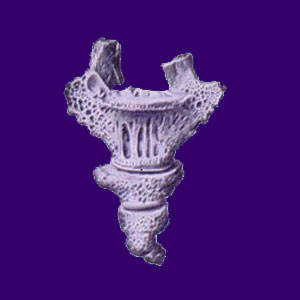
Porous bones is a diagnosis closely related to early stages of osteoporosis and is also commonly called osteopenia. Abnormal bone porosity will create weak bones which are more susceptible to fracture and general degeneration due to age and physical activity. Bone porosity issues are influenced by genetic factors, but can usually be prevented through a proper diet, exercises and pharmaceutical treatment.
Porosity is a relative condition, since every person demonstrates different levels of natural bone density. Women naturally have less dense bones than men and older people have less dense bones than younger. The degree of porosity which may be deemed problematic is not always an objective criterion, but more of a subjective one based on age, gender, lifestyle, physical condition and other factors.
This discussion explains the importance of maintaining proper bone density in order to ward off pain and dysfunction later in life.
Bone Porosity Parameters
The cells in your bones are like a hardened, dried sponge. They have spaces in between them, which are not usually visible to the naked eye, but can be viewed easily under a microscope. Bones which are deemed to be overly porous have abnormally enlarged spaces between cells and even large gaps in some cases.
As porosity increases, bones begin to look perforated and holes can be viewed even without magnification. Obviously, the more holes and spaces appear, the less structurally sound the bone structure will be. Healthy bones are dense and solid, while pore-filled bones will demonstrate weakness, brittleness and a susceptibility to fractures or even collapse.
Bone Porosity Issues
Porosity issues occur due to several reasons, including genetic predisposition, a lack of certain dietary and nutrition components, including calcium, magnesium and vitamin D, and a lack of skeletal-loading exercise.
Most porosity concerns can be prevented by following a healthy diet and exercise routine throughout life.
Many people do not worry about bone porosity until they already have problems, making treatment difficult and prevention far too late to consider. However, it is never too late to increase the health and strength of your bones, since new drugs have made effective treatment possible for even severe cases of porosity.
Help for Porous Bones
The time to think about porosity problems is when you are young and healthy. By maintaining your overall health and wellness through a nutritional diet and well designed exercise plan, you can reduce or eliminate the chances for many troublesome health issues later in life.
Osteoporosis can be prevented in the overwhelming majority of people simply and easily. However, once the condition strikes, the consequences can be dire and treatment can be highly challenging.
To learn more about avoiding osteoporosis, talk to your doctor or a certified nutritionist for detailed advice. Be sure to spread this guidance to younger people in order to help the next generation to maintain good health and physical functionality before they too require active and possibly risky osteoporosis treatment.
We cover the topic of a healthy diet for strong bones and a healthy back in our Back Exercises and Stretches book. This book is part of our proven pain relief program and is available to help you 24 hours a day, worldwide.





